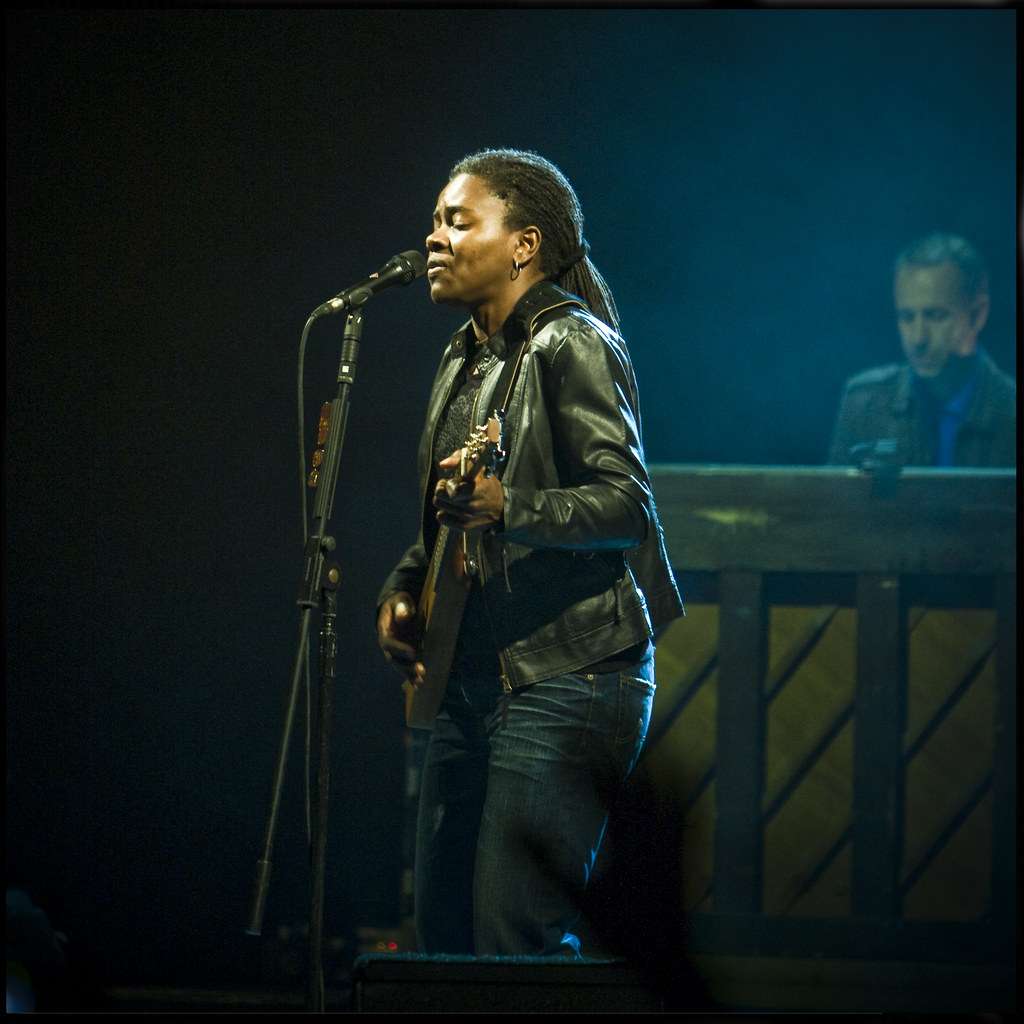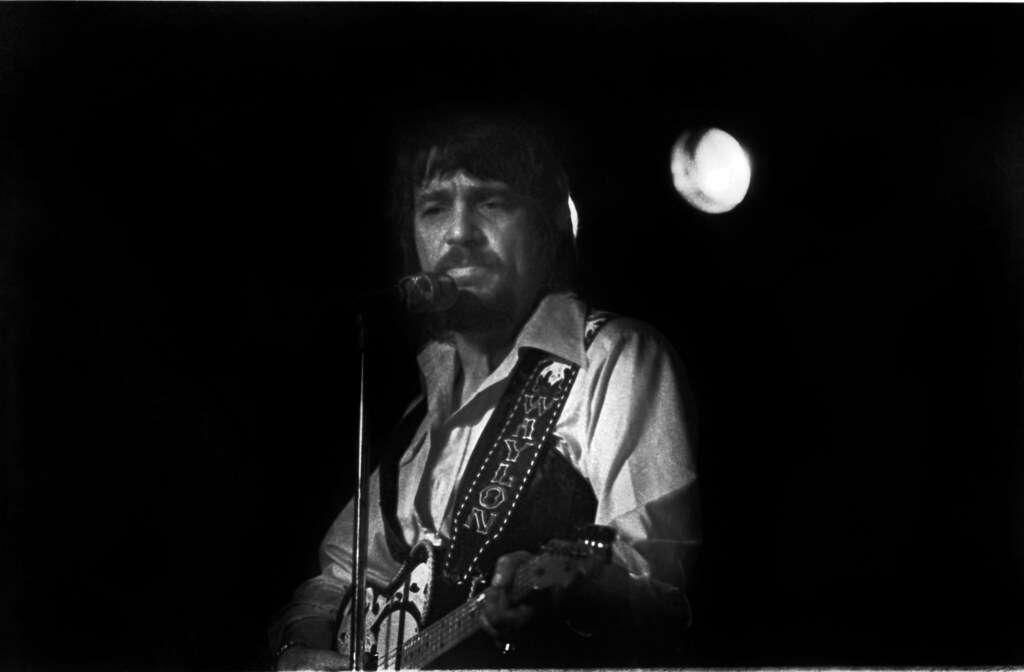Accomplished musician Tracy Chapman, acclaimed for her soulful voice and thought-provoking lyrics, uses a distinctive style that captivates the hearts of her listeners. This is not only down to her intoxicating vocals but also her innovative guitar techniques. These techniques, from her unique fingerpicking style to her recognizable strumming patterns, have set a standard by which many guitarists compare themselves. Moreover, learning these methods not only offers a new way to engage with her songs but also equips guitarists with fresh techniques to add to their arsenal. This essay discusses in detail the essential aspects of Tracy Chapman’s guitar style, explores the intricacies of her most popular hits, and provides guidelines to adapt her style into your own guitar playing.
Understanding Tracy Chapman’s Guitar Technique
While the celebrated essence of Tracy Chapman is often encapsulated within her unforgettable voice and heart-touching lyrics, another compelling component that contributes to that special, unparalleled magic is her distinctive guitar playing style. The manner in which she’s able to coax and wrangle emotion from the inanimate speaks to a profound connection between artist and instrument. So much of her music feels like an intimate conversation, the kind that can only develop from such a deep emotional kinship.
First and foremost, it’s essential to highlight Chapman’s unadulterated simplicity; the foundation on which her guitar greatness is built. Chapman’s playing is not embroidered with flashy styles and techniques. She embraces an understated, organic approach, using open tuning and basic chords to create a raw, intimate imagery that synchronizes flawlessly with her soulful voice.
If one closely observes Chapman’s playing, they’ll stumble upon the subtle artistry of her strumming and finger-picking techniques. The backbone of an incredible assortment of her songs hinges on the delicate complexity woven into her seemingly simple finger-picking rhythms. Chapman has a knack for imprinting memorable melody lines into her listeners ears and hearts, created by plucking rhythmic patterns on guitar along with her resounding lyrical narrative.
Another distinctive facet of Chapman’s guitar playing is her use of Alternative-Tunings. Her songs range from the standard EADGBE to DADGAD, providing variation and demonstrating her willingness to continuously explore the vastly diverse auditory landscape of a singular instrument. Such Tunings, often used in folk music, confer Chapman’s raw, earnest sound its uniquely rich character.
Remarkably, Chapman is able to morph the traditional tonal spectrum of the acoustic guitar, always letting the melody lead and choosing the harmony that best supports her lyrical content. It can create a heavy melancholic atmosphere as in “Fast Car”, or the down-to-earth vibrancy of the timeless classic “Talkin’ ’bout a Revolution”, each playing a fundamental role in solidifying the deep, narrative resonance of her songs.
Attached to these skills is an often overlooked but equally important element: silence. Chapman is renowned for her command of space and silence within her songs. She allows her guitar to breathe, accentuating the powerful stories her lyrics divulge. It serves as a poignant reminder that music, as in life, is as much about the pauses as the moments filled with sound.
Finally, the true genius behind Chapman’s guitar playing can be traced back to its function within her music: it’s inseparable from her voice, serving as an amplification of the emotion being dispensed. Every strum, pick and pause works in beautiful harmony with her vocal melodies to render soulful expressions that leave an indelible impact.
In conclusion, demystifying Tracy Chapman’s unique guitar playing style is like unveiling the eloquent secret language of an enigmatic poet. Simplicity blended with complex rhythm patterns, diversified tuning, interactive melody and harmony, mindful use of silence and, above all, an emotional synthesis with her voice – these are what make Tracy Chapman a guitar virtuoso. Her style embodies a certain purity that reflects the essence of guitar playing, serving an aesthetic purpose rather than merely technical superiority – proof that music isn’t always about dazzling speed or intricate complexity, but connection, communication and emotional resonance.

Learning Tracy Chapman’s Popular Songs
Unleash your Melodic Spirit: Unlock the Mystical Soundings of Tracy Chapman’s Iconic Songs on Your Guitar
Tracy Chapman, in all her quiet glory, is an enigma wrapped in raw talent, breathing life into songs that still ring true well beyond the borders of their era. The art of playing Chapman’s iconic songs on guitar is not just a technical grind, rather, it’s an intimate exploration of one’s ability to tap into their melodic spirit.
Let the exploration begin with the understanding of chord mastery, which is crucial to echoing the emotive canvas of Chapman’s work. Like stanzas in a poem, Chapman decorates her music with a host of chords, from simple open chords to more complex barre ones. “Fast Car”, for instance, makes use of a mesmerizing succession of chords – Cmaj7, G, Em, D – that underpin Chapman’s passionate narration. Similarly, in “Give Me One Reason,” it’s the bluesy shuffle between F#m and D that propels the song, creating a compelling dialogue between the guitar and the lyrics.
Whilst adapting to these chord transitions, one should remain mindful of the unmistakable beat of Chapman’s songs. Her ability to manipulate tempo to correspond with the narrative of her songs is an undervalued aspect of her musicianship. A prime example is the rhythmic progression in “Baby Can I Hold You” which slows down and speeds up, underscoring the emotional narrative of the lyrics. This morphing tempo is key to embedding your guitar playing with Chapman’s magical essence.
Dynamic range colors the spoken word of Tracy Chapman’s songs. Pay extra attention to the “louder” or “quieter” segments of her body of work. The deep dive into the musical depths of “Talkin’ Bout A Revolution” plays in the juxtaposition between the loud agonizing chorus and the quieter reflective verses. The subtle volume changes add depth to the song, making the audience feel the intensity of each word.
Do not forget that Chapman’s guitar isn’t just her instrument, it’s her vocal comrade. As they weave through each song, her voice and guitar take turns in leading the dance. Drawing upon this inseparable bond, the aspirant guitarist needs to master the skill of singing while playing. This symbiosis is particularly evident in “Crossroads,” where Chapman’s plaintive voice hums along with her guitar’s miniature arpeggios.
This artful mastery of Tracy Chapman’s style is more than just a technical endeavor: it turns the spotlight on the intimate, transformative power of music as an embodiment of passion, solidarity, and resilience. Guitar in hands, melody in heart, and Chapman’s ethos in mind, you have a landscape of endless rhapsodic exploration. As you tune up and pluck those strings, remember that each note is a step forward in paying homage to Chapman’s captivating musical legacy and her singular capacity of opening spaces for deep, powerful conversations.
Incorporating Tracy Chapman’s Style into Your Own Play
Desiring to integrate Tracy Chapman’s indelible guitar techniques into one’s own playing reflects an appreciation for a truly gifted artist. Her sheer dedication to her craft deeply resonates in every chord she strikes. This guide will help you glean inspiration from Chapman’s playing, whilst also keeping your own style intact.
Wrap Your Head Around the Lyrics
Firstly, a genuine understanding of Chapman’s lyrics is key. Her moving stories of social issues, love, and resilience, are intertwined with her guitar techniques, conveying intrinsic emotions through her melodies. Delving into Chapman’s lyrical world aids you in experiencing the raw emotions she intended; thus, assisting in incorporating her style automatically into your chords and strums.
Echo the Intimacy
Chapman is known to infuse her performance with a striking intimacy that both captivates and stirs her listeners. To emulate this, the aim lies not in replicating her performance, but in finding your own intimate and honest space while playing. Let every note, pause, and phrase resonate from the heart.
Cultivate the Contrast
While keeness lies in Chapman’s minimalistic style, the contrast she achieves requires keen observation. Chapman uses crisp notes against backdrop facets of harmonics, which cradles her songs in a musical landscape. Her delicate strums are often juxtaposed with firm, grounded chords. Aim to create this contrast in your play, incorporating both light and heavy-handedness in your strumming and plucking.
Embrace Her Signature Capo Style
Another significant characteristic of Chapman’s style is her use of a capo. While often employed to change the key of a song without altering the chord shapes, she uses it to carve a sound unique to her style. Use of a capo, even if it means venturing into unfamiliar territory, could prove worth the endeavor to reflect her distinctive sound.
Embed Her Vision of Freedom
Even though Chapman’s style redefines the boundaries of folk and pop music, its essence lies in the feeling of freedom. The keys of her songs open doors to liberty, resilience and empathy. This is more about perception and less about technique- strive to capture this sense of uninhibited freedom when you slide your fingers along the fretboard.
In conclusion, incorporating Tracy Chapman’s guitar style isn’t about mimicking the artist perfectly. It’s about appreciation, interpretation, emotion, and transforming these into a tactile revelation through your instrument. The path to such an artistic endeavor is paved with patience and practice, but a sincere love for music makes it not just possible, but a journey worth enjoying. Embrace the artistry — the ties, the passion, the resilience, that Chapman infuses into every measure. And remember the end goal isn’t to become a replica of Chapman, but a version of yourself that has been touched, molded, and inspired by her incredible musical legacy. Now, pick up your guitar and let the strings tell their tale.
Indeed, imbibing Tracy Chapman’s guitar style can be a fantastic way to progress your guitar playing skills. It teaches you innovative patterns of strumming and fingerpicking, thus enriching your musical toolbox. Moreover, the detailed exploration of her popular songs grants a more profound understanding of her unique technique and how it contributes to each song’s emotion and resonance. Armed with this knowledge, guitarists gain insight into how to mold these techniques into their style, leading to a more versatile and dynamic playing style. Keep in mind, mastery comes with practice, so take time to perfect your craft and soon, the distinct essence of Tracy Chapman’s guitar style will reflect in your performances.
Cover Photo Credit “Tracy Chapman” by OhDarkDevil is licensed under CC BY-NC-SA 2.0








